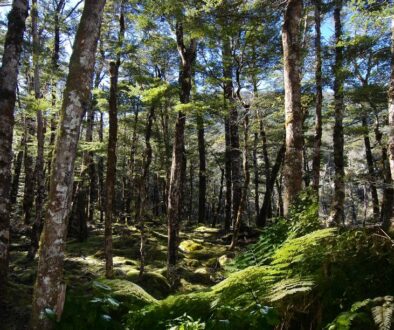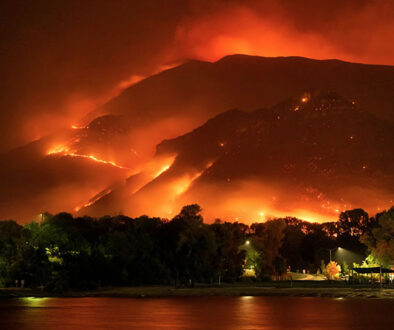May 2021 floods: ‘The attack of the ‘zombie’ rivers’
Left: 4.00pm 29 May. Water flow 4 cumecs.
Right: 4.00pm 30 May. Water flow 966 cumecs.
Fig.1 (Photos: Nick Ledgard)
Ashley River Rakahuri
By definition, braided rivers are made up of multiple channels or ‘braids’. Systematically forcing them into the solitary confinement of single channels is turning them into what University of Waikato’s Professor James Brasington calls “zombie” rivers, waterways locked into position between stopbanks and their headwaters. Planting willows and poplars as a ‘natural’ way to hold them in place has just exacerbated the problem. Confining braided rivers not only creates problems for freshwater ecosystems including habitat for braided river birds, it also makes these rivers prone to catastrophic flooding.
“If we put our rivers into straight-jackets, they lose the diversity of form and process that are fundamental to the creation of thriving ecosystems. Instead, we should make space for rivers to erode their corridors, flood naturally in areas that are of less value which will in turn, reduce risks in more sensitive areas. We must work with natural processes to reduce the flood risk and support healthy river ecosystems.” – James Brassington
Last weekend, several zombie rivers in Canterbury broke free and invaded towns and properties.
It’s not like we weren’t warned. In 2019, NIWA published this extraordinarily well-ignored report outlining the current NZ$40 billion flood risks to Canterbury (no, that’s no a misprint; it’s billion, not million) (Fig. 2) .
I’ve yet to meet anyone who read their entire report, much less acted on it. A small extract made headline news in a North Canterbury paper and was promptly forgotten.
Two weeks ago, I gave a presentation to the Waimakariri drainage group on the risks of flooding from pluvial and fluvial events and rising sea levels. It caused some discomfort, but then again, I was talking about climate change. A concept that probably seemed too remote to lose much sleep over.
Last weekend’s floods will no doubt make headline news again in our local papers. And in a few weeks it will also probably be forgotten by most people, especially those who weren’t directly affected. Part of the reason is that the phrase ‘1-in-100 event’ is often misunderstood, leading to a false sense of security that these zombies and their big brother rivers are unlikely to escape again in our lifetimes. (The term ‘1-in-100 years’ is in fact a statistical annual exceedance probability. It’s arguably moot in any case as many hydrologists consider stationarity to be dead.)
And then there’s the false perception that ECan is obligated to shove every metre of rivers back into solitary confinement. The situation on the Okuku River is a case in point. The poor little Okuku, like many zombie rivers, is so glutted with weeds that it’s unrecognisable as a braided river. It’s not even mentioned on the braided rivers website. I mention it here now, because this section of the Okuku is outside the river ratings area. Councils are under no obligation to protect those who live and farm in its riverbed. At some point, properties in riverbeds are likely to be deemed too risky to insure, which raises the question of who will pay for more extreme weather events? And how can we tell if climate change is the cause?
In January this year, nine New Zealand river experts wrote an article in The Conversation, titled ‘Why we should release New Zealand’s strangled rivers to lessen the impact of future floods’.
“We shouldn’t be surprised when our rivers break their banks — that’s just a river being a river. Current management practices in Aotearoa treat rivers as static, in the hope of making them more predictable.
“But this can lead to disasters.
“Unless we change management practices to work with a river, giving it space to move and allowing channels to adjust, we will continue to put people and rivers on a collision course.
“When flood risk is managed poorly, disadvantaged groups of the population are often disproportionately impacted. Given climate change predictions of more extreme floods and drought, the problem will only get worse.”
One of the authors of this article, Dr Jo Hoyle from NIWA, will be presenting a paper at the next Braided Rivers seminar at Lincoln University Wednesday 14 July. If you are reading this after the event, a PDF of her presentation will be available here.
For more information see the pages on this website:






